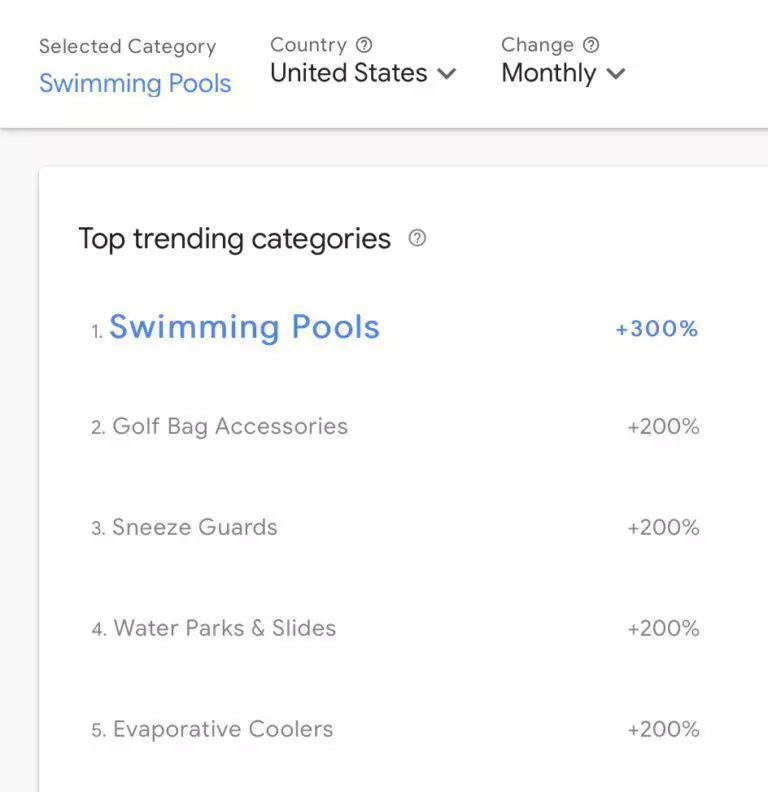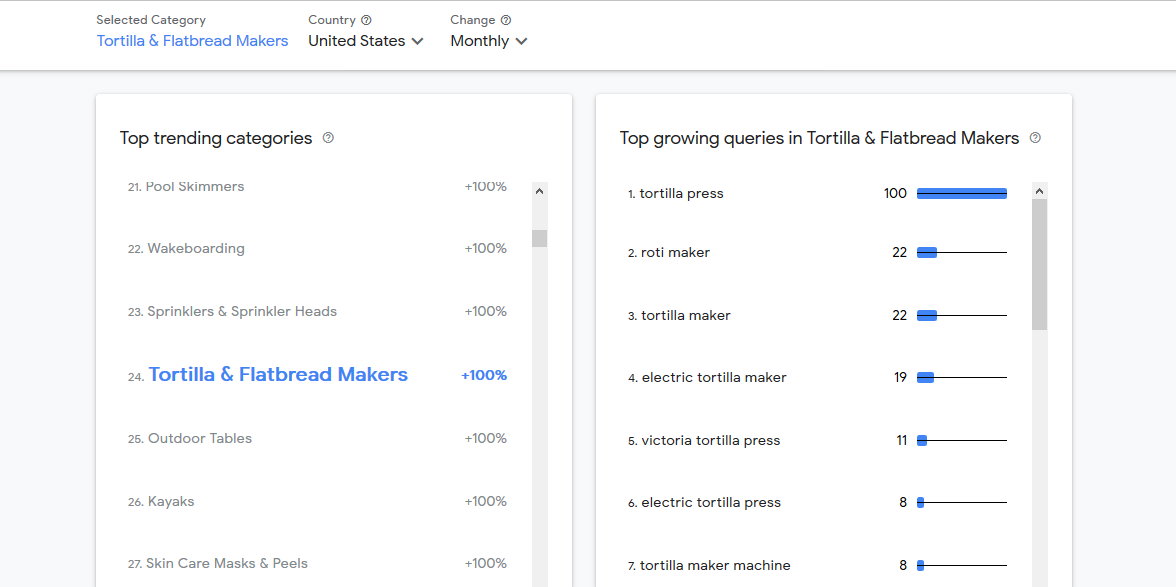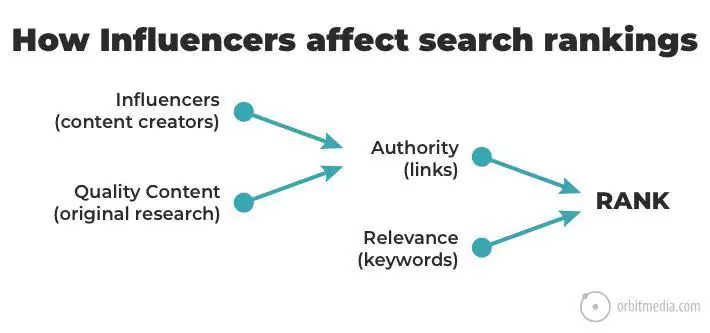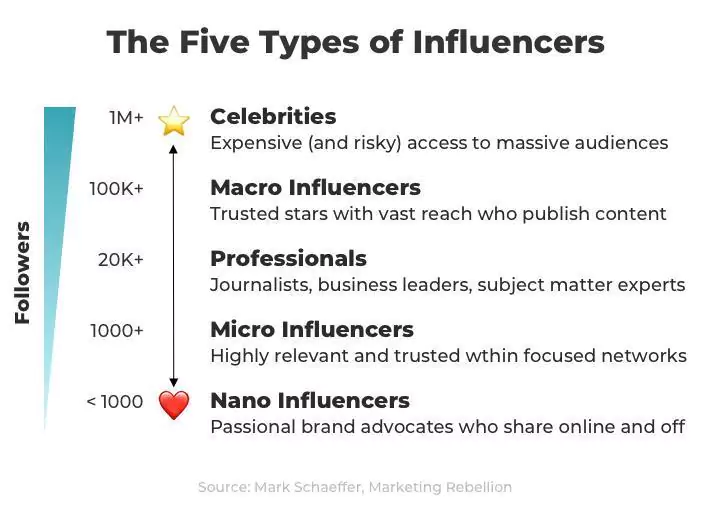
Content marketing has proven to be a reliable way to grow your eCommerce store.
Want to build awareness and generate leads for your store? Content marketing will help you do this at scale. Want to outdo your competitors and rank higher on Google? Look no further — it is your best bet.
However, we’ve been hit by a pandemic that left 51% of business owners on the brink of applying for bankruptcy. There’s a lot of uncertainty as to when this will end, so it’s easy to question whether content marketing will continue working for you.
And instead of putting your budgets on hold, it’s time to shift your content marketing efforts to focus on the content assets you already have to get more out of less. Here’s how to do that:
1. Meet Your Customers Where They Are
With the lockdown and the pandemic, consumer behavior has changed. On average, an internet user spends close to 6.5 hours online every day. Data from Google reflects this trend through the products people are searching for online:
Image Source: Think with Google
Even with the pandemic, your consumers still have needs. They have just evolved to make their lives easier while spending time at home. From products to help run great virtual meetings to ergonomic desk chairs, or meeting schedulers, consumers are looking for specific items to boost their at-home workplace too.
Think with Google has launched a new tool — Rising Retail Categories — to help you know what consumers are searching for, the terms they are using, and the number of search queries in the past month, week, and year.
Image Source: Rising Retail Categories
If you have several product lines and some of the products you’re selling include any of the products on the list, e.g., Tortilla and Flatbread Makers, then you need to focus all your marketing efforts (and budget) to promote these products.
The information that the content on your site should aim to attract browsers looking for information, not necessarily looking to buy a product. This is where building genuinely useful and informative content comes into your eCommerce content marketing strategy.
If you don’t have enough resources to do this on your own, partner with other businesses to help promote the products and share the revenue you generate. For example, you may identify a chef who’s an expert at making flatbread and pay him/her to create a guide on how to make flatbread to help promote your product.
An excellent example of this is how Breadcrumbs has done it in their guide: How To Write A Case Study by working with a subject matter expert on the topic. It helps them earn credibility and removes any objections a consumer has that prevent them from buying their products.
What if the products you’re selling do not appear in the list of 295 rising related categories? That’s what we’re talking about next.
2. Update Your Old Content
Forty-eight percent of online shoppers start their buying journey on search engines. Having your product missing from the rising retail categories is an opportunity for you to start working on the best content you’ve ever created to help boost your search engine rankings, build awareness, and generate leads in the process.
In fact, according to data by Higher Visibility, it takes 3-6 months of consistent effort to start ranking for relevant search terms. If you start right now, you’re going to start reaping the fruits come the holiday season and other major shopping holidays such as Black Friday and Cyber Monday later in the year.
Besides, your old content has earned credibility in the eyes of Google, and that means you should be getting results sooner than you expect.
Head over to your Google Analytics account. Under Behavior Reports, pay attention to your top-performing content with a high amount of organic traffic.
Posts that are receiving a ton of organic traffic but have a high bounce rate and exit rate need an update. While this content may be great, you need to align it to user intent and context to help you boost dwell time, one of the elements that affect search engine rankings.
This means that you will need to use a tool like SEMrush writing assistant to help you know what terms you need to include that searchers are also using. These terms also appear on the top 10 posts on page one, which dramatically increases the chances of having your content ranking on page one of Google.
Besides, these terms also show you the direction which the post should take and areas where you need to go deeper to explain key ideas and selling points about your product.
Remember to update any facts and statistics you included in your content for accuracy and relevance. Hiring or outsourcing the role to someone who can regularly check and update content is well worth the investment.
3. Repurpose Your Best Content
Having updated some of your best pieces and published them, you’ll need to do more than just schedule them for the next nine weeks on tools like Hootsuite or Sprout Social.
Written content is no longer enough to help you achieve your marketing goals. Content consumption habits have changed, meaning that you need to adapt to have a chance at getting a hold of your audience’s attention.
For instance, 45% of consumers watch videos for close to one hour a day, and half of your potential customers rely on videos to make a decision.
A video where you’re recording product delivery to a consumer and their emotional reaction as they unbox the product is authentic and instantly connects with a potential customer because they would love to have a similar experience, and it is going to boost your conversion rates. This isn’t something you’ll accurately capture using written content and still deliver the same results.
Consumers have also embraced podcasting, given that 32% of Americans between 12 -24 years have listened to a podcast show in the last 30 days.
To top it all off, content with visuals gets 94% more views, and readers retain 65% of what they learn through visual content after three days.
With these stats in mind, why would readers stick with written content alone? This isn’t to suggest that written content has lost its place. It won’t. What we’re saying is that you need to repurpose your content to take care of different learning styles in your audience by making it easier to consume.
Doing this isn’t hard. Creating a compelling infographic (even without prior experience) makes your work easier. Alternatively, partner with another brand to create infographics.
You can also convert your content into audio format. You may narrate or look for a voice-over artist to do it for you.
Take this a step further and look for popular podcasts in your niche and appear as a guest, and talk about common pain points that the audience faces and their solutions.
Here, your goal isn’t selling, rather delivering value and pointing back this audience to your best content. You’ll also be earning links pointing back to your site through the show notes, and the brand mentions you receive will increase brand awareness.
Once you appear as a guest and the show goes live, promote it to your email list and on your social media channels to increase the number of people who listen to your content.
Here’s another idea – repurpose your blog content into short content snippets for use in your newsletters.
4. Work With Influencers
Most brands work with influencers for one primary reason: Increase awareness for their products by reaching a bigger audience. And when it comes to getting better results with your content, 43% of bloggers are happy with the results they’ve gotten from working with influencers.
Here’s why;
Influencer outreach gives you an edge compared to running paid ads to your product landing pages. Given its rising popularity, the cost of running ads on Instagram is increasing, while at the same time, consumers are losing trust in these ads.
On the other hand, influencers have built audiences over time through their engagements with their followers, building trust in the process.
Having a trusted influencer promote your content for you will help you earn credibility, build awareness, and increase the number of leads and customers you get. Besides, here’s how influencers affect your search engine rankings:
Image Source: Orbit Media
Here are the different groups of influencers you should be looking to work with:
Image Source: Orbit Media
I’ll leave out macro-influencers and celebrities because if you’re a small brand and you’re not wildly popular, it will be hard for them to pay attention to you, and the cost of working with them will be high. Besides, you’re better off building credibility by starting from the bottom (nano influencers) then moving up the ladder.
When working with influencers, you can either use bylined guest posting to earn brand mentions, build authority and brand awareness, or have a consistent social media promotion to promote your brand and its products.
When using a bylined guest posting, you will need to work with professionals in your niche who have blogs and a decent following (~ 20k). Given the trust they’ve built with their audiences through their content, posting on their blogs will help boost your credibility.
Remember, you’re not guest posting to earn links. You’re doing it to add value to their audiences. The links you earn in your bio and your content come as a bonus, and the more you add value, the more you earn high-quality links pointing back to your store.
When working with social media influencers, you want to look for micro-influencers (~1k+ followers) and nano influences (less than 1k followers) to help you promote your content using webinars and products. These influencers have highly focused audiences of your ideal customers, meaning you’re going to get more ROI from your collaboration.
A typical collaboration might include a genuine review from the influencer plus a promotion over a few months. Sweeten this deal by including a discount code for any orders that come through this promotion. Alternatively, run a contest together with the influencer to help you boost product and brand awareness.
If you don’t have access to influencers, user-generated content from your customers works just as well.
Earlybird, an app created to help families invest for kids, utilizes user-generated content to promote their app.
Their blog includes guest spotlights like this one from their customers, explaining how the app has helped them.
User-generated content is an inexpensive way to build customer confidence in your products or services. It also provides an authentic touch to your content marketing efforts.
Conclusion
Content marketing still works but only for those who are willing to be flexible enough to change their approach in uncertain times.
And to keep your business afloat while still building a formidable brand, identify opportunities from rising retail categories and then find a way to reach your customers using content.
And if you can’t do that, revamp your old content then convert it into different formats for your audience.
Finally, work with relevant influencers to help you promote your products, earn brand mentions, and build brand authority in your niche.
Does this require you to spend money? Yes. But this will be at a fraction of the whole amount if you start with a free content analysis showing you exactly what content you need to focus on to get the results you want.
So, what are you waiting for?
AUTHOR BIO
Vikas Kalwani is a product-led growth hacker and B2B Marketing Specialist skilled in SEO, Content Marketing, and Social Media Marketing. He works at uSERP and is a mentor at 500 Startups.












